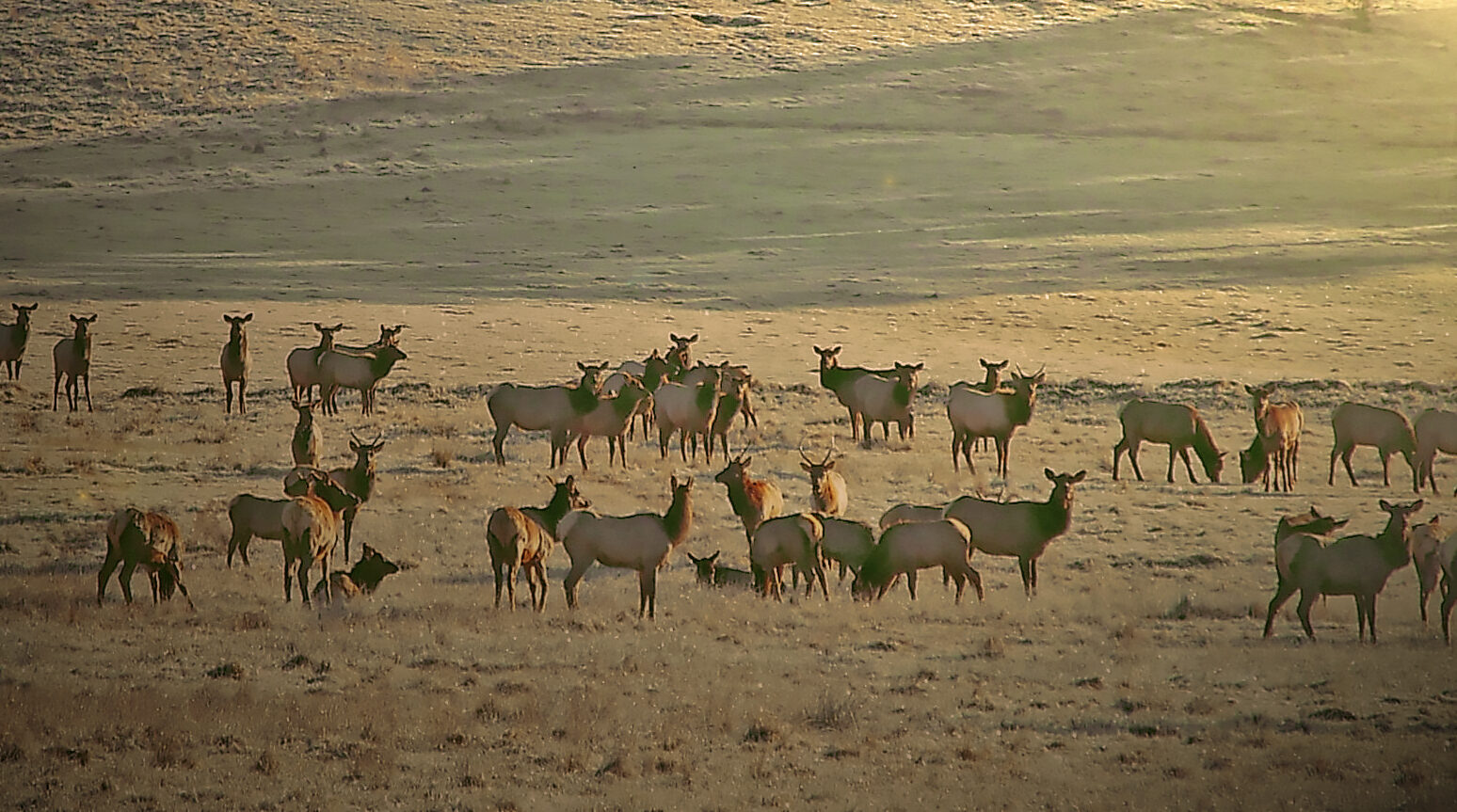KALISPELL — This winter, Montana Fish, Wildlife & Parks is embarking on the second year of a multi-year project aimed at better understanding elk dynamics within the South Fork Flathead River drainage.
FWP biologists are conducting this effort in response to declines in elk numbers and poor calf recruitment, which are raising concerns for the sustainability of the elk population in this drainage that is predominantly within the Bob Marshall Wilderness.
Historically, the South Fork supported robust elk populations but recent decades have witnessed a sharp decline with current documented numbers at their lowest in roughly a century.
Limited access within the Bob Marshall Wilderness poses unique challenges to study and manage wildlife effectively. There is a notable lack of contemporary data on elk vital rates, seasonal habitat selection, and movement patterns within this wilderness area.
This month, FWP and U.S. Forest Service staff are venturing into the remote backcountry the old-fashioned way, relying on cross-country touring ski equipment to navigate the snow-covered terrain to get to Big Prairie. Crews plan to spend up to four weeks working in the wilderness.
With technical support from the Flathead National Forest Spotted Bear Ranger District and funding from the Rocky Mountain Elk Foundation, this project will employ GPS radio collars to track elk movements, survival rates, and habitat use, providing insights into how elk navigate the challenges of living in a wilderness area.
Crews will operate from Big Prairie Ranger Station throughout February, aiming to collar 16 cow elk with radio collars to gather precise data on their movements and survival.
“For years, hunters have sounded the alarm about elk declines in the South Fork. However, FWP’s response has rung hollow due to limited information and management tools. This project will provide information that will improve discussions on factors limiting elk number in the Bob Marshall and help to formulate potential management actions,” said Franz Ingelfinger, FWP’s wildlife biologist leading the project.
“Understanding elk movements, habitat use, and survival in the South Fork is crucial to effective wildlife management. This research will help identify factors influencing elk numbers and inform management decisions aimed at long-term health of elk herds in the South Fork.”
Last winter, FWP initiated the project by collaring 14 adult cow elk near the wilderness boundary at Bunker Creek, between Dry Parks Mountain and Lower Twin Creek.
“To be clear, this is a study of limited scope,” Ingelfinger said. “Thirty collars distributed on cow elk across the South Fork won’t solve the riddle of the South Fork. However, we hope to glean important information that will improve management.”
FWP and the U.S. Forest Service are committed to protecting wilderness character and minimizing impacts on wildlife. Captures will be conducted using approved wildlife handling techniques to ensure the safety and well-being of the elk. Additionally, field operations will be planned to align with wilderness management principles, including preserving the natural integrity of the landscape.
-fwp-



